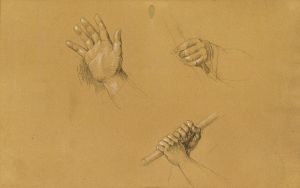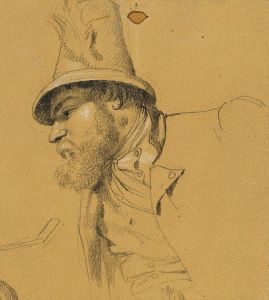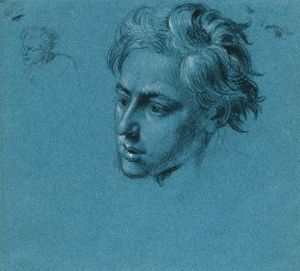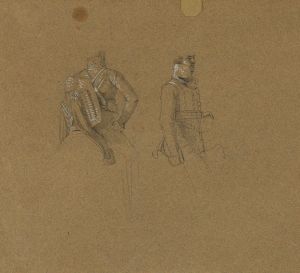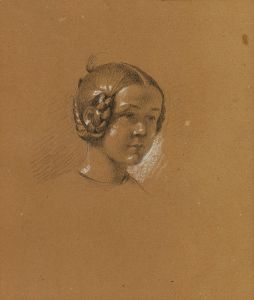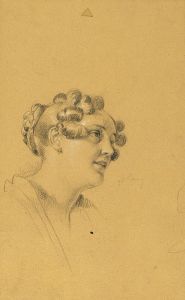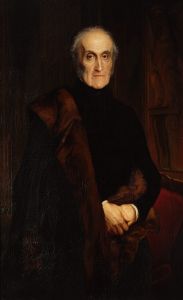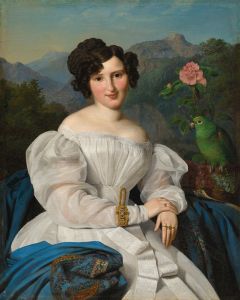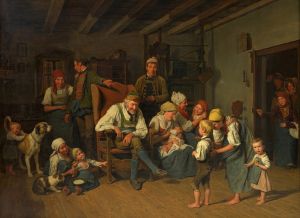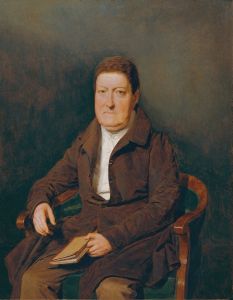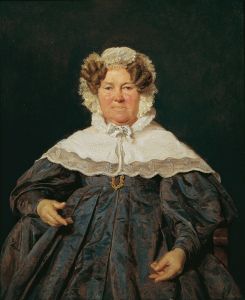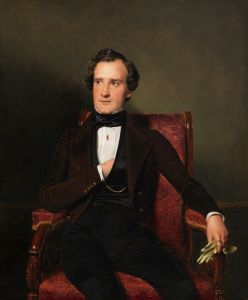
Kaiser Franz I
A hand-painted replica of Ferdinand Georg Waldmüller’s masterpiece Kaiser Franz I, meticulously crafted by professional artists to capture the true essence of the original. Each piece is created with museum-quality canvas and rare mineral pigments, carefully painted by experienced artists with delicate brushstrokes and rich, layered colors to perfectly recreate the texture of the original artwork. Unlike machine-printed reproductions, this hand-painted version brings the painting to life, infused with the artist’s emotions and skill in every stroke. Whether for personal collection or home decoration, it instantly elevates the artistic atmosphere of any space.
Ferdinand Georg Waldmüller (1793–1865) was an Austrian painter and one of the most prominent figures of the Biedermeier period. Known for his detailed and realistic depictions of landscapes, portraits, and genre scenes, Waldmüller played a significant role in 19th-century Austrian art. Among his works is the painting titled Kaiser Franz I, which portrays Emperor Francis I of Austria (1768–1835), the first Emperor of Austria and a significant political figure in European history during the Napoleonic era.
The painting is a formal portrait of Emperor Francis I, created in Waldmüller’s characteristic style, which emphasizes precision and realism. The emperor is depicted in a dignified pose, wearing formal attire befitting his status as a ruler. The work reflects the artistic conventions of the time, with a focus on capturing the subject’s personality and authority. Waldmüller’s skill in rendering textures, such as the fabric of the emperor’s clothing and the details of his facial features, is evident in this piece.
This portrait is an example of Waldmüller’s ability to combine technical mastery with a sense of humanity, even in official portraits. While Waldmüller is better known for his genre paintings and landscapes, his portraits of notable figures, including this depiction of Emperor Francis I, demonstrate his versatility as an artist.
The painting is significant not only as a work of art but also as a historical document, providing insight into the visual representation of power and leadership in early 19th-century Austria. It reflects the cultural and political climate of the time, as well as the role of portraiture in reinforcing the authority and legacy of monarchs.
Details about the current location of the painting or its provenance are not widely documented. However, Waldmüller’s works are held in various collections, including the Belvedere Museum in Vienna, which houses many of his most famous pieces. It is possible that Kaiser Franz I is part of a public or private collection, but specific information about its whereabouts is not readily available.
Ferdinand Georg Waldmüller remains a celebrated figure in Austrian art history, and his works continue to be studied and appreciated for their technical brilliance and cultural significance. Kaiser Franz I stands as a testament to his skill as a portraitist and his contribution to the artistic heritage of the Biedermeier period.





